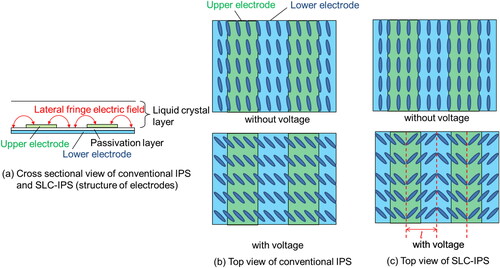Figures & data
Figure 4. Cross-sectional and top views of SLC-IPS LCD and conventional IPS-LCD. Red dotted lines denote the imaginary boundary.

Table 1. Specifications for the developed LCD using SLC-IPS.
Register now or learn more
Open access
Figure 4. Cross-sectional and top views of SLC-IPS LCD and conventional IPS-LCD. Red dotted lines denote the imaginary boundary.

Table 1. Specifications for the developed LCD using SLC-IPS.
People also read lists articles that other readers of this article have read.
Recommended articles lists articles that we recommend and is powered by our AI driven recommendation engine.
Cited by lists all citing articles based on Crossref citations.
Articles with the Crossref icon will open in a new tab.